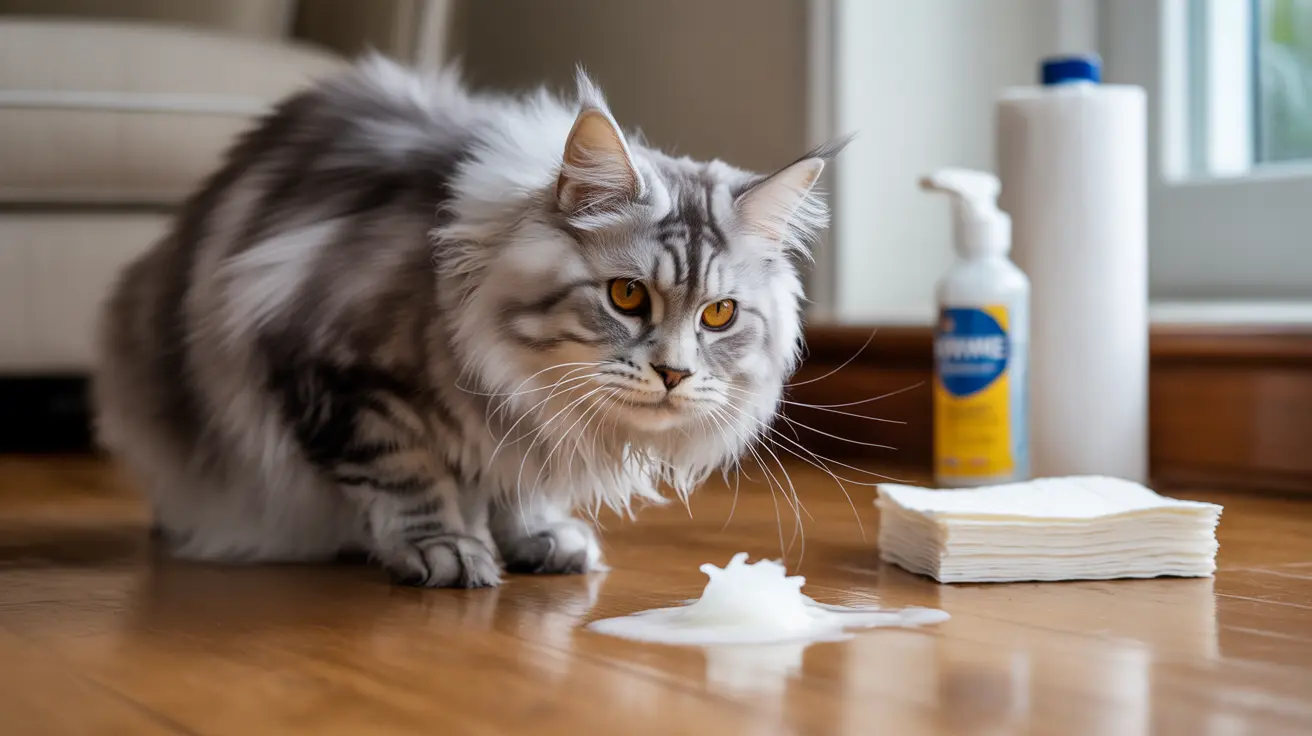Every cat owner has faced the unpleasant surprise of discovering cat vomit on their floors. Whether it's a hairball or upset stomach, knowing how to clean up cat vomit properly is essential for maintaining your home's cleanliness and protecting your flooring. This comprehensive guide will walk you through the most effective methods for cleaning cat vomit while preventing damage to your surfaces.
Immediate Response: First Steps for Cleaning Cat Vomit
Quick action is crucial when dealing with cat vomit. Here's what you should do immediately:
- Put on disposable gloves for hygiene protection
- Remove solid matter using a paper plate or cardboard
- Blot up excess liquid with paper towels
- Avoid rubbing, which can spread the mess and damage surfaces
Essential Cleaning Tools and Products
Having the right cleaning supplies ready is key to effective cleanup:
- Disposable gloves
- Paper towels or old rags
- Enzyme-based pet cleaner
- Baking soda
- Clean microfiber cloths
- Pet-safe disinfectant
Safe and Effective Cleaning Methods
Hard Surface Cleaning
For hardwood, tile, or laminate floors:
- Blot the area completely dry
- Apply an enzyme cleaner specifically designed for pet messes
- Let the cleaner sit according to package instructions
- Wipe clean with a slightly damp microfiber cloth
- Dry thoroughly to prevent moisture damage
Carpet and Rug Treatment
For soft surfaces:
- Remove solid matter carefully
- Blot with clean paper towels
- Apply enzyme cleaner generously
- Use a clean white cloth to blot, not rub
- Allow the area to dry completely
Deodorizing and Sanitizing
After initial cleanup:
- Sprinkle baking soda over the area
- Let it sit for several hours to absorb odors
- Vacuum thoroughly
- Apply a pet-safe sanitizing spray if needed
Prevention and Maintenance Tips
Reduce future cleanup challenges by:
- Placing washable mats in problem areas
- Keeping cleaning supplies easily accessible
- Regular grooming to reduce hairballs
- Monitoring your cat's diet and eating habits
Common Mistakes to Avoid
Don't make these cleaning errors:
- Using harsh chemicals that may harm your pet
- Rubbing instead of blotting
- Leaving moisture on surfaces
- Waiting too long to clean up
- Using steam cleaners on fresh messes
Frequently Asked Questions
What is the best way to quickly clean cat vomit from hardwood floors without causing damage?
Remove solid matter with a paper plate or cardboard, blot excess liquid, then clean with an enzyme-based cleaner specifically formulated for hardwood. Avoid excess moisture and dry thoroughly to prevent damage.
Can I safely use baking soda or hydrogen peroxide to remove cat vomit stains and odors on wood floors?
Baking soda is safe for deodorizing but use sparingly on wood floors. Hydrogen peroxide should be used cautiously and always diluted, as it can damage wood finishes. Test in an inconspicuous area first.
Why should I avoid vinegar or harsh chemical cleaners when cleaning cat vomit from hardwood?
Vinegar and harsh chemicals can damage wood finishes and strip protective coatings. They may also leave strong odors that could stress your cat and potentially encourage repeat marking.
How do enzymatic cleaners work to eliminate cat vomit stains and smells on hardwood surfaces?
Enzymatic cleaners contain beneficial bacteria that break down organic matter at a molecular level, eliminating both stains and odors completely rather than just masking them.
What steps can I take to prevent permanent stains or warping caused by cat vomit on hardwood floors?
Act quickly to remove vomit, use minimal moisture when cleaning, ensure thorough drying, and use appropriate cleaners. Consider placing protective mats in areas where your cat frequently vomits.
Conclusion
While cleaning up cat vomit isn't pleasant, having a proper cleaning strategy makes the task more manageable and helps prevent permanent damage to your floors. Keep appropriate cleaning supplies on hand and act quickly when accidents occur. Remember that regular veterinary check-ups can help prevent excessive vomiting in the first place.






